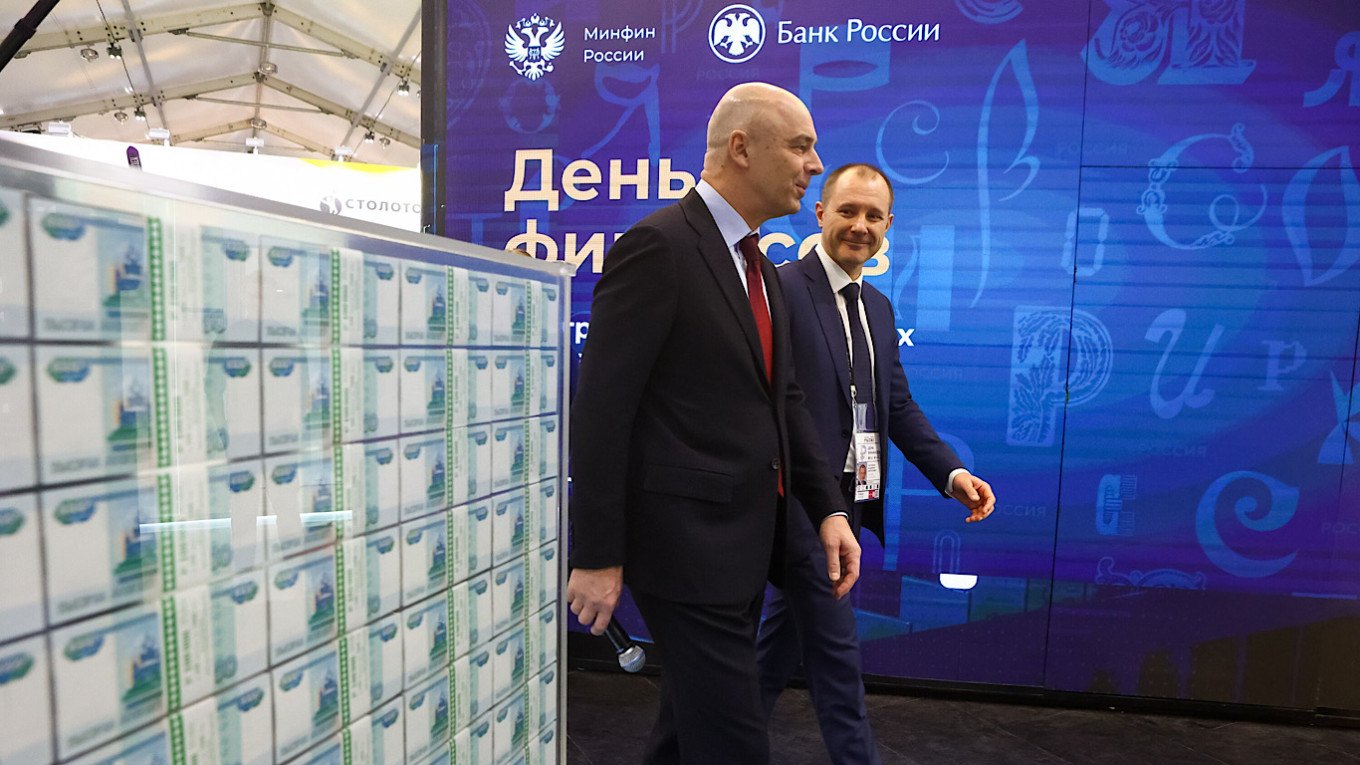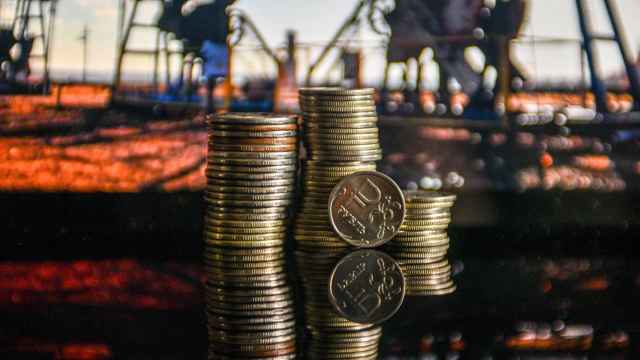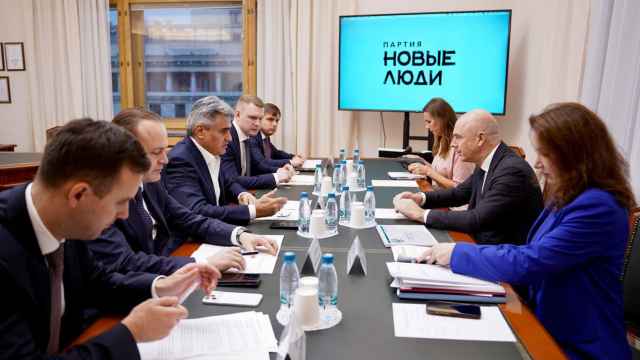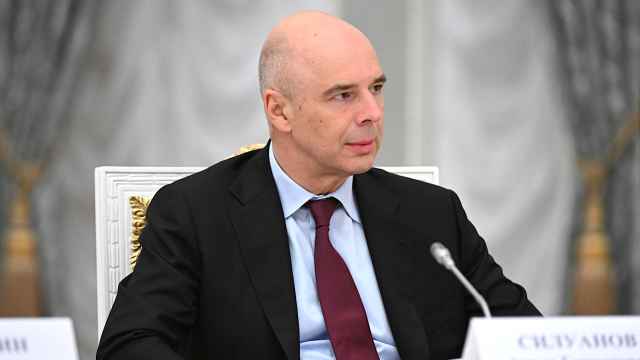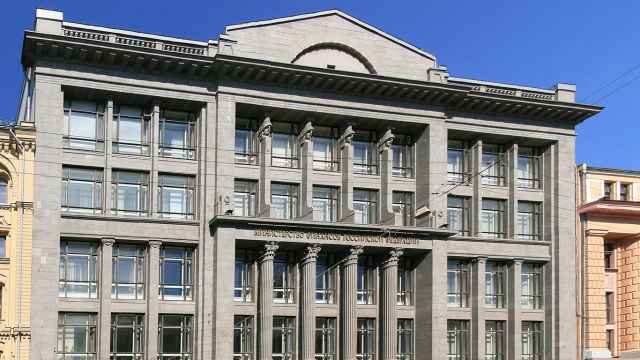Russia’s Finance Ministry has unveiled a draft federal budget for 2026 that includes new tax hikes aimed at sustaining steady wartime spending.
The proposed budget, which still requires approval from lawmakers in the State Duma, underscores the Kremlin’s determination to press on with its war on Ukraine — even if it means higher costs for businesses and consumers.
The biggest change is a planned increase in value-added tax (VAT) from 20% to 22%, designed to help plug a widening deficit caused by soaring defense spending and shrinking oil and gas revenues under Western sanctions.
More businesses will be required to pay VAT. The minimum annual revenue threshold for businesses to make payments is set to fall from 60 million rubles ($732,000, according to spot foreign exchange market data published by Reuters) to 10 million rubles ($122,000).
The government also plans to target the betting industry with a 5% tax on wagers and a 25% levy on betting companies’ profits.
Moscow-based economist Dmitry Polevoy of Astra Asset Management estimates that the proposed measures, including both new taxes and the rollback of existing tax breaks, could generate an additional 2.4-2.9 trillion rubles ($29.3-$35.4 billion) in revenue.
For context, Russia’s budget deficit is projected at 5.736 trillion rubles ($70.0 billion) in 2025 and 3.786 trillion rubles ($46.2 billion) in 2026.
According to Polevoy, the new tax measures will allow the Finance Ministry to avoid reducing planned expenditures for 2026 and beyond in nominal terms.
How do the spending plans differ from 2025?
The government expects to collect about 40.3 trillion rubles ($491.7 billion) in revenue in 2026 — a nearly 10% increase over 2025.
Federal spending, meanwhile, is projected to rise by a smaller 4.3%, from 42.3 trillion rubles ($515.1 billion) this year to 44.1 trillion rubles ($538.0 billion) next year.
This suggests the Kremlin is taking a cautious, conservative approach to budget planning, neither cutting spending nor allowing it to rise beyond limits.
Measured as a share of GDP, revenues are expected to remain flat at 17.1%, while spending will decline from 19.7% to 18.7%, according to calculations by the Kommersant business daily.
Foreign policy priorities
Although overall spending will remain broadly stable, budget allocations reveal that the Kremlin’s priorities continue to lie in foreign policy and defense.
Defense and domestic security spending will make up around 38% of the budget in 2026 — only slightly less than the 40% share seen over the past two years.
The occupied regions of Ukraine will see a major funding boost, with at least 60 billion rubles ($732 million) in additional subsidies planned for 2026 compared to the 2025 budget, the exiled outlet Vyorstka reported.
The Russian-controlled part of the Donetsk region will receive the largest share at 77.8 billion rubles ($949.2 million) versus 54.5 billion ($664.9 million) in 2025, while subsidies for the Luhansk region will receive 55.5 billion rubles ($676.1 million), up from 37.8 billion ($461.2 million).
Media and propaganda spending is also on the rise. The government intends to allocate 146 billion rubles ($1.78 billion) for mass media, up 6.6% from last year.
About 25.96 billion rubles ($317 million) of this will go to the Institute for Internet Development, one of the Kremlin’s main vehicles for producing youth-oriented propaganda, the investigative website IStories reported.
Other influence projects are expanding as well. The Russia in the World program — designed to promote “traditional spiritual and moral values” among foreign youth — will receive 11.9 billion rubles ($145.2 million) in 2026, more than double the 5.5 billion ($67.1 million) allocated in 2025, according to the investigative outlet Agenstvo.
At the same time, traditional propaganda outlets like RT and the state television holding VGTRK are expected to lose around a third of their funding starting in 2027, IStories reported.
While defense and propaganda budgets remain protected, several development programs will face cuts.
Some of the reductions include rural development initiatives (down 30% to 81.5 billion rubles or $993 million), the aviation industry (-29.6% to 14.4 billion rubles or $175.7 million), and the energy sector (-28.6% to 17.9 billion rubles or $218.4 million).
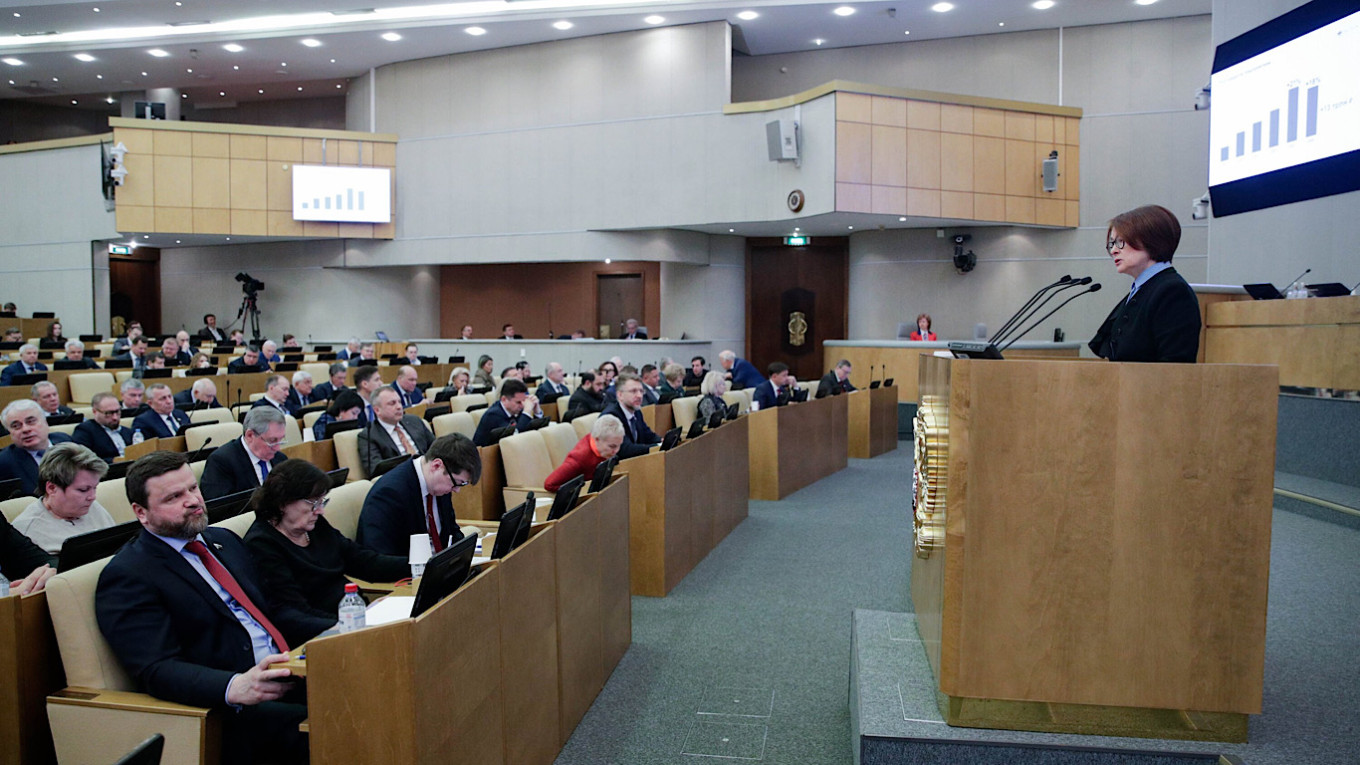
Funding for a regional primary care modernization program will plunge from 123.3 billion rubles ($1.50 billion) in 2025 to just 53.2 billion rubles ($649 million) in 2026.
What is driving Russia’s budget strategy?
Russia is being driven to increase taxes and moderate overall spending by three key factors.
First, 2025 budget revenues fell short of expectations and widened the deficit. Oil and gas revenues are projected at just 8.65 trillion rubles ($105.5 billion) this year — 22% lower than the 11.13 trillion rubles ($135.8 billion) collected in 2024. The sluggish economy, expected to grow by just 1%, has also weighed on non-energy tax receipts.
As a result, the deficit for 2025 is expected to reach 2.6% of GDP, the highest since the pandemic year of 2020. Under the new budget, the government aims to narrow the deficit to 1.6% of GDP in 2026.
Second, the war in Ukraine is dragging on with no end in sight, and sanctions are likely to be tightened even further.
That leaves Moscow in a bind. It cannot afford to cut defense spending — but it also does not want to run chronic deficits or stretch its finances to the breaking point, as doing so would reduce its resilience to possible future crises.
Russia is now trying to balance the books and rebuild its reserves, or at least stop depleting them further.
After years of heavy drawdowns, the liquid portion of the National Wealth Fund — held in foreign currency and gold — has fallen by roughly half since the invasion of Ukraine, leaving 3.92 trillion rubles ($47.8 billion).
The government plans to finance next year’s spending through new debt and higher taxes while rebuilding the fund’s liquid reserves to 4.5 trillion rubles ($54.9 billion) by the end of 2026.
Third, there is the problem of inflation, which remains stubbornly high largely because of Moscow’s sustained war-related spending and state subsidies.
By keeping the budget closer to balance, the Finance Ministry hopes to cool price pressures and eventually enable the Central Bank to lower its key interest rate, which currently stands at 17%.
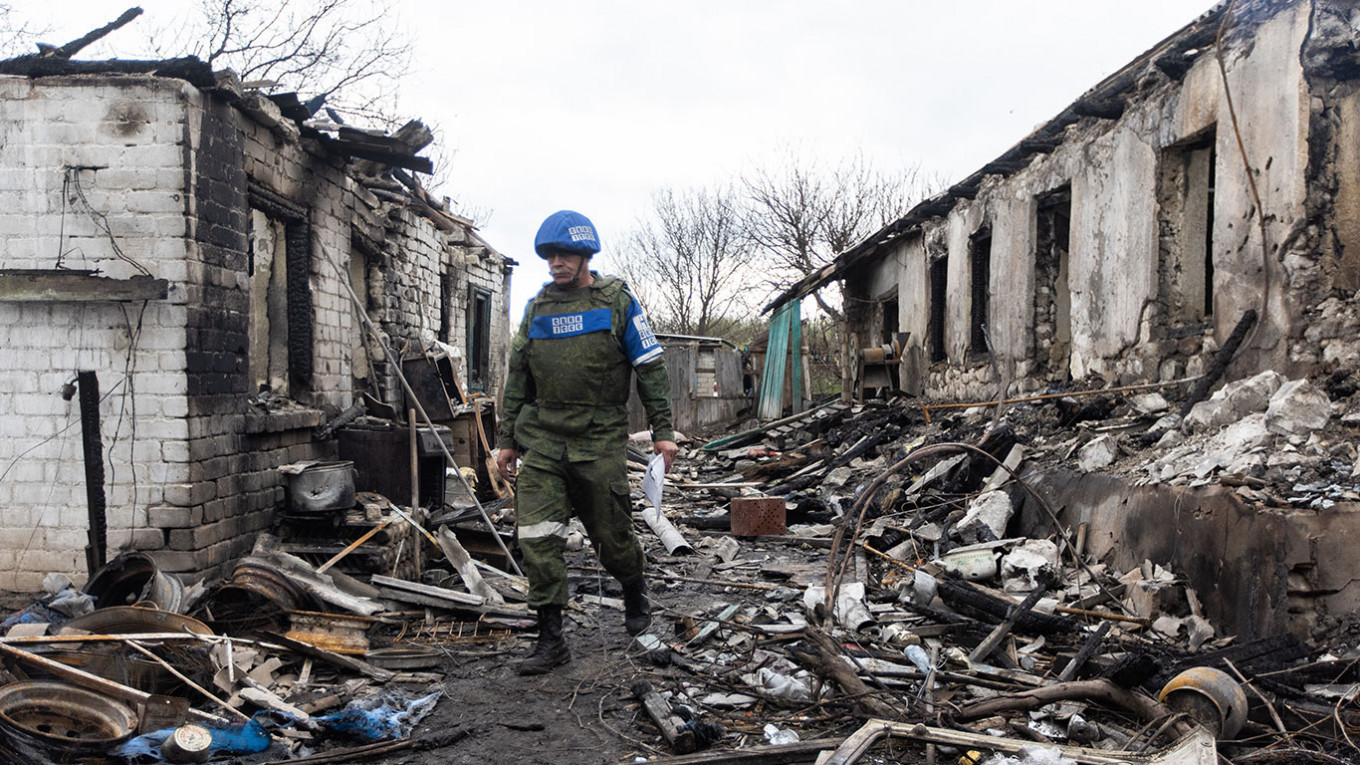
What are the consequences for the economy?
Small businesses are expected to be hit hardest by the new tax regime.
Lowering the VAT threshold from 60 million to 10 million rubles in annual revenue could affect around 450,000 small businesses and self-employed individuals, business outlet The Bell reported.
Yegor Diashov, head of the Moscow-based investment firm Dialot, predicted that the higher tax burden will accelerate market consolidation, with smaller companies merging or being absorbed by larger players.
“A business with 10, 20, or even 50 million rubles in revenue [per year] will simply become impossible to administer,” he said. “Companies will either form partnerships, sell to one another, or stronger players will absorb weaker ones.”
However, analysts say the tax hikes are unlikely to trigger major inflationary or economic shocks.
Polevoy estimates the VAT increase will add just 0.6-0.7 percentage points to inflation in 2026, as higher expenses on goods and services are passed on to consumers and essentials like food and medicine remain taxed at the lower 10% rate and are exempt from the VAT increase.
While smaller firms may struggle, the measures are unlikely to severely hamper growth, said economist and former Federal Tax Service analyst Dmitry Nekrasov.
“Compared with other economies, Russia still has plenty of room to raise the tax burden as a share of GDP — by another 3-5% on average across the economy,” Nekrasov said.
For comparison, the average tax-to-GDP ratio across the 38 OECD member countries was 33.9% in 2023, with France, Austria, Italy, Denmark and Finland exceeding 40%.
Russia’s ratio stood at 31% that year, according to a government report published in late 2024.
A Message from The Moscow Times:
Dear readers,
We are facing unprecedented challenges. Russia's Prosecutor General's Office has designated The Moscow Times as an "undesirable" organization, criminalizing our work and putting our staff at risk of prosecution. This follows our earlier unjust labeling as a "foreign agent."
These actions are direct attempts to silence independent journalism in Russia. The authorities claim our work "discredits the decisions of the Russian leadership." We see things differently: we strive to provide accurate, unbiased reporting on Russia.
We, the journalists of The Moscow Times, refuse to be silenced. But to continue our work, we need your help.
Your support, no matter how small, makes a world of difference. If you can, please support us monthly starting from just $2. It's quick to set up, and every contribution makes a significant impact.
By supporting The Moscow Times, you're defending open, independent journalism in the face of repression. Thank you for standing with us.
Remind me later.



